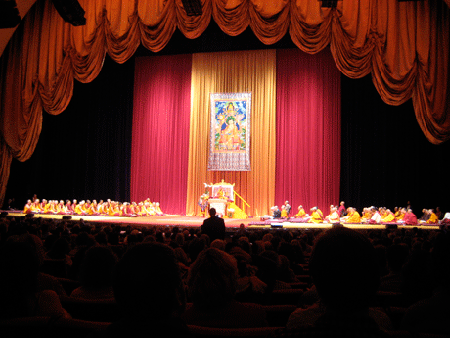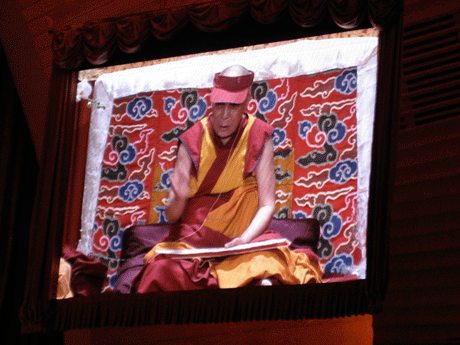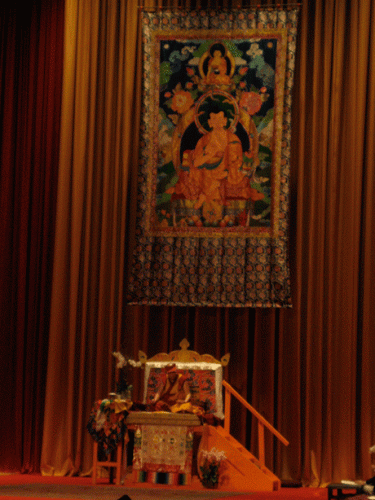In my days as a student at Naropa University I can recall many occasions, both in the classroom and out, where I found myself among a small handful of people discussing the work of Nagarjuna. These discussions, without fail, would lead to highly complex conversations and/or debates about the nature of emptiness, the ultimate nature of reality, the absolute and the relative, nihilism and eternalism, middle-way philosophy, and so on. If someone had told me then that I would one day find myself sitting in Radio City Music Hall surrounded by thousands of New Yorkers all receiving the same teachings, I might not have believed it—but that is exactly what took place yesterday.
As can be expected with just about any discourse on a Nagarjuna text, even with my relative degree of familiarity I still found much of yesterday’s teachings hard to understand. I can only imagine what it must have been like for the thousands of people there who have never even heard a teaching on emptiness before, much less an advanced esoteric lecture on madhyamaka philosophy! (*Insert the “over the head” hand gesture here.)
[note: Here is a good piece on understanding Nagarjuna by David Loy, “The Dharma of Deconstruction”]In today’s teaching, the Dalai Lama finished his discussion of Nagarjuna’s text and moved on to the Shantideva text, A Guide to the Bodhisattva’s Way of Life. This was much more accessible. The Dalai Lama introduced the concept of exchanging self and other and taught that ignorance is one of the chief causes of suffering. He explained that with a proper understanding of cause and effect, the nature of reality, and interdependent origination, we will be more capable of achieving happiness for ourselves and manifesting compassion for others. By introducing the subjects of personal happiness and compassion towards others, it was as if yesterday’s complex teachings on emptiness and the nature of reality were given some much-needed context, and I could feel the people around me become more engaged.
Another very interesting part of today’s teaching was the discussion of Buddhism’s relationship to quantum physics. His Holiness spoke of his conversations with highly intelligent western quantum physicists in which the striking similarities between Buddhist teachings and this fascinating field of science were touched on. Just like Nagarjuna describes in his text, these quantum physicists attest that when their work takes them very far into observation of matter and existence, they eventually get to a point where they can no longer prove anything exists at all! Obviously, the fact Buddhists are able to cite an ancient Buddhist text that says essentially the exact same thing as this cutting edge field of western scientific inquiry is quite impressive to the physicists.
Still, the Dalai Lama pointed one very important difference between Buddhism and quantum physics. With science, one only looks at the external world and therefore what is gained is a massive amount knowledge. With Dharma practice, one applies the same investigative methods to the internal world of personal experience and what is gained is more than just knowledge; one gains a deeper type of understanding altogether. It is the type of understanding that helps one achieve happiness and act with true compassion. It is the type of understanding that gives one the ability to liberate oneself and others from suffering.
This can be deep, heavy stuff, and I hope my attempt to explain some of these complex ideas hasn’t left you scratching your head. Here are some photos and videos from the teaching today at Radio City music hall. They were shot/recorded from my little handheld Canon Elph so they are definitely not the highest quality, but nevertheless I’m still very happy to share them with you all. (Videos after the jump.)
Dalai Lama telling a story (Video)
Ignorance explanation snippet (video)
And some pictures


